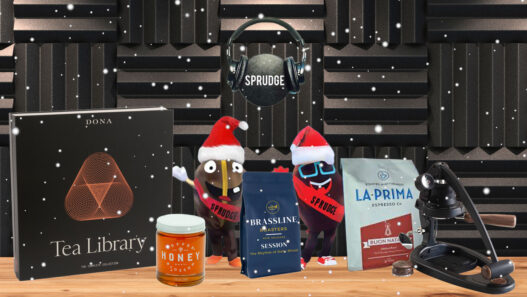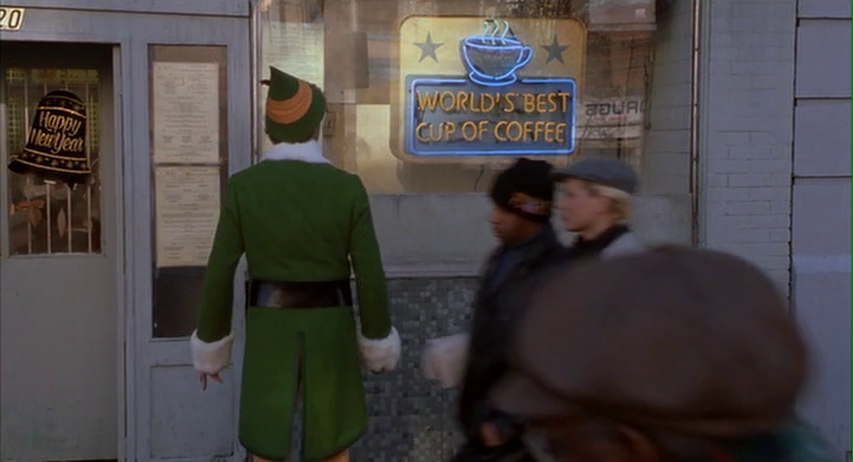If a cupping spoon could tell stories, imagine all of the stories it could tell. The travels, the coffees it cupped, the times it got lost, the people it met.
As so often happens in coffee, the spoon represents the adaptation of an existing tool, fitting it to coffee’s specific needs and creating a whole culture around it. The cupping spoon is a valued member of one’s set of coffee tools and this is especially true for those who use it daily.
But before we get into the familiar cupping spoon, let’s backtrack to the utensil itself. As long as humans have needed, prepped, and consumed food, spoons were right by their side. There are over 25 different types of spoons these days and far more customizable details than you can imagine.
You might consider that a spoon is just a spoon. A necessary eating utensil, nothing more, nothing less. But ask others and the spoon becomes a collector’s item or an object that’s tied to an incredible memory. For this piece, I spoke to a variety of spoon enthusiasts: those who have collected for decades, an artist, and a designer. Their passion for spoons may differ but it’s clear that their spoons all evoke memories and emotions in some way.
Wayne Bednersh has been collecting spoons for over 30 years and has thousands of them in his personal collection, many of which are documented online. He first began as a silver collector when one time, a dealer talked him into buying a spoon for $2. After sitting in a drawer for a while, he pulled it out and really examined it. The spoon was an antique, handmade in England, and dated to 1860. “At some point in time, I lost interest in the other silver and just collected spoons,” he says.
For collecting purposes, Bednersh doesn’t really differentiate between tea and coffee spoons. He pinpoints their popularity in the US to the mid-1800s when the tea ceremony was introduced by the English upper class. Silver manufacturers took note and in the 1890s, began producing sets of six or eight spoons. He described it as “the tea ceremony filtered down to the wealthier middle class.” These demitasse spoon sets often featured intricately carved handles or a coffee bean attached and if they were special, individually nestled in a box.
Today, Bednersh is selective about adding spoons to his collection, favoring handmade or hand-engraved ones (a rare skill today). His passion for spoons is shared with the Spoon Collectors of Southern California, a group he’s looking forward to hosting in his home for the first in-person meeting in two years.
***
In the early days of specialty coffee, cupping spoons were not as widely produced, and those who cupped often sought out cupping spoons from elsewhere. And while this is not an encouragement for stealing from restaurants, I’ve been told that a bouillon spoon works well for cupping.
These days, though, you have a lot of choices in cupping spoons. The color, material, engravings, and associated stories all come together for someone to pick that spoon as their favorite.
Since 1994, when he first began working in green coffee buying and quality control, Vice President at consulting business Coffee Enterprises Spencer Turer has been collecting coffee cupping spoons. While he has more than 40 in his collection, there are two that stand out for him: his first and second-ever cupping spoons.
Before training was as widely available as it is now, green coffee training operated more like an apprenticeship. “When they feel that you are able to evaluate coffees and make an informed decision that can be used for a management decision or a commercial decision, now you’re true cupper,” says Turer. When he reached “true cupper” status, Turer’s mentor gifted him with one of his own spoons, which Turer considered a “high honor.” It was his preferred cupping spoon until the second one came along.
“I stopped using my original spoon because that has so much history and tradition,” he tells me, holding it in his hand during our interview. “I keep it with me. I bring it with me everywhere I go. But I don’t use it because that’s kind of the honorary legendary spoon.”
The spoon he does use for coffee cupping is from Ipanema Coffees in Brazil, gifted to him in 1996. He says, “When I’m using the spoon, it kind of connects me to all the coffees I’ve ever cupped.” But more practically speaking, it’s also a known item with its weight, size, shape, and how the coffee reflects off the bowl, making it easier for him to focus on the coffee. Recently, he acquired a silverware case to store the rest of the collection and looks forward to collecting more spoons.

There must be something about Brazilian cupping spoons because retired SCA Executive Director Ric Rhinehart practically wrote an entire homage for one to me: “The spoon itself was a silver-plated creation with a small, round, Brazilian style bowl, and was made as part of a promotional run for La Mulata… I carried that spoon with me for more than a decade of coffee travels, slurping from cups on five continents and more than 20 countries.”
Unfortunately, during a coffee buying trip, his computer bag along with the treasured spoon was stolen. It wasn’t until the next year that he stumbled upon a sister spoon in Kenya. “I grabbed the spoon excitedly and told my host the story of my own La Mulata spoon and how I was saddened by its loss,” shares Rhinehart. The owner of the spoon turned down his offer to buy it, a disappointing but understandable decision. “I left the spoon behind, thinking I would never see it again, but happy to have had the chance encounter in such a great cupping room in a legendary farm and extraordinary coffee origin.” Several weeks later, Rhinehart was told that the spoon owner had reversed his decision and wanted to gift it to him. This spoon was his constant travel companion for the next 13 years and today, he says it “rests in a drawer by my bedside, waiting for another trip to taste coffee in some faraway place, a tangible reminder of the generosity and friendship of coffee folks all over the world.”

Another longtime coffee professional had a similarly detailed story to share about his favorite spoon. “I had seen one but never owned one,” says coffee roaster Jim Brady about spoons that SCAA co-founder Ted Lingle had made and given to “people who were key to helping him in the process of establishing a new association.” Right before giving a presentation on the chemical processes of roasting, an industry colleague walked up to Brady and said, “I found this at work and I just knew it had to come and live with you.” It’s now used as a treasured cupping spoon, part of his collection of 30 cupping spoons. To him, “spoon collecting offers a useful tactile memory place card.”
This kind of object-associated memory recall is part of episodic memory: the kind where you can “replay” a scene or remember various details of a personal experience. The objects themselves are termed “mnemonic” and have been found to be more important to someone than objects of greater financial or social value. This link between the senses and memory is known, though the why and how of memory storage is still being researched.
Writer and multi-disciplinary artist Ari Corradi, who works under the alias Ariadne Radi Cor, can tell you about every coffee spoon in her collection. For an exhibition at London cafe Prufrock Coffee, she meticulously labeled, categorized, and framed about 140 spoons. She says, “Every spoon had a tiny label hanging from it, giving the information of where, when, who with.”
She began collecting spoons, among other objects, as a teenager. Corradi waxes nostalgic about them: “When I was younger, I thought spoons were like little tombstones to moments in time, moments in a friendship, to trips, to courage, to strangers you’d never meet again, and the spoons really were just these mirrors, although upside down, that reflected on that moment.” Once she takes a spoon, she leaves it as is; there is no washing off of stains or polishing to be done. These stains and markings are forever sealed with the memory.

At coffee cuppings, spoons are often available at the table. But at events like Expo or World of Coffee, you may find yourself at multiple tables or booths. Seasoned cuppers have their favorite spoons and tend to keep them by their side as they move between tables. Coffee professional Judith Konsten found herself missing a safe and clean space to place her spoon and as a result, created a cupping spoon holster.
Made of polyester fabric and imitation leather, the holster is looped around your neck, securely keeping your cupping spoon with you at all times. She made a small batch of holsters for a recent trip and will produce more if there’s interest (message her on Instagram if you’d like one!).

Arguably the name that comes to mind when one thinks of coffee spoons is Umeko Motoyoshi, owner of Umeshiso Coffee Supply and whose colorful cupping spoons have made a substantial impact on the industry. They designed the first spoon, the Big Dipper, for slurping and skimming. But moreover, seeing the rainbow color helped remind them that they belonged at the cupping table. As a “nonbinary, mixed race, disabled, a proud gaysian,” their own experience at “exclusionary or uncomfortable” cupping tables informed their decision to create a brand that combats those feelings.
“I think a lot of coffee professionals feel uncomfortable in cupping settings, but we feel pressured to act like we’re fine,” says Motoyoshi. “I also have a lot of customers who don’t even use the spoons for coffee, and just like to have a product that celebrates queerness and color and being yourself.”
In the specialty coffee industry, spoons are more than eating utensils. They’re a representation of one’s identity, a cherished travel companion, and a reminder of all the coffee adventures that have been embarked on.
And on that note, I leave you with a question to ponder: is a spoon still a spoon if it has no bowl? Everyone I asked said yes but that certainly makes me wonder what the definition of a spoon really is.
Jenn Chen (@thejennchen) is an Editor At Large at Sprudge Media Network. Read more Jenn Chen on Sprudge.

























